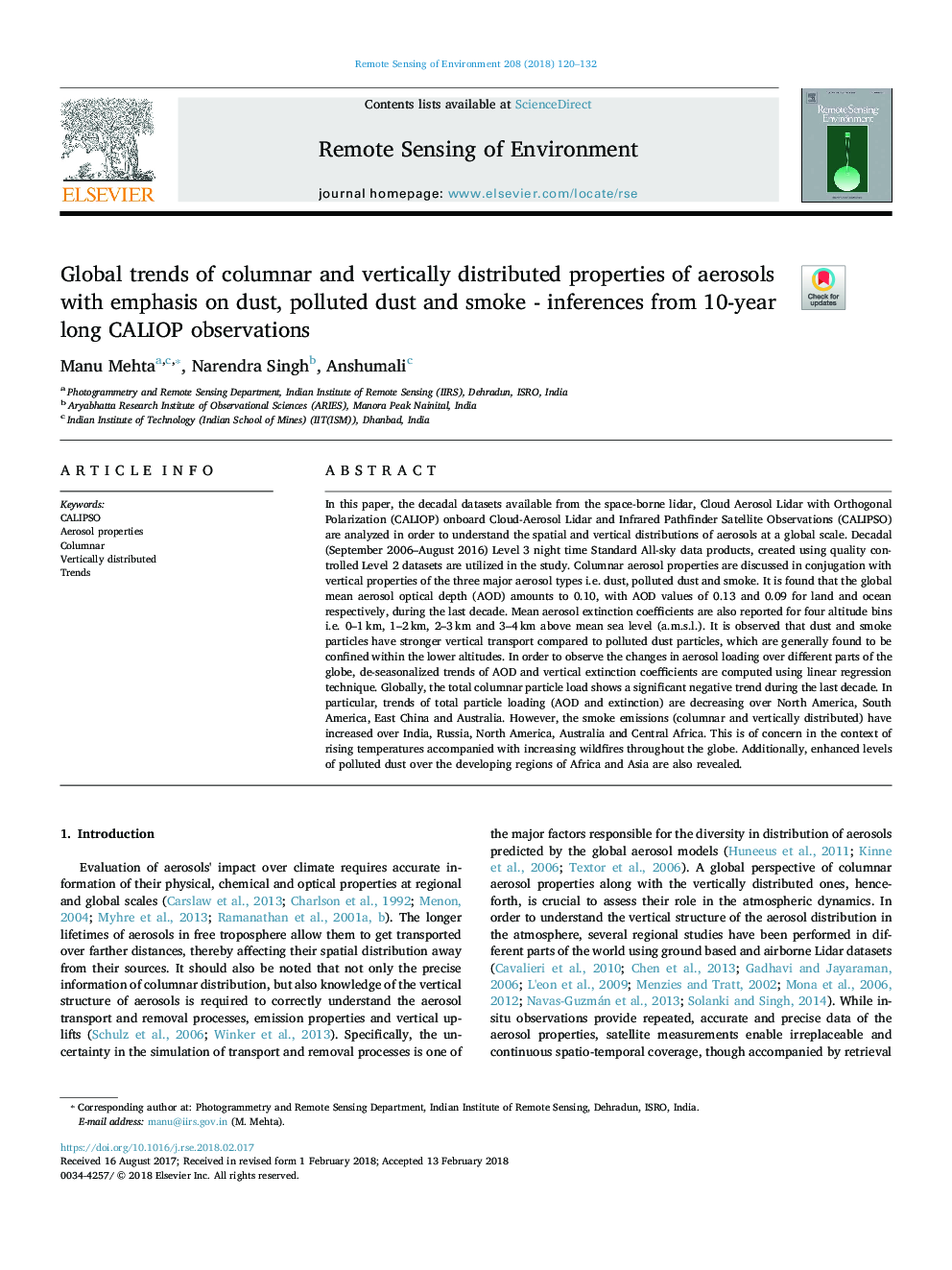| Article ID | Journal | Published Year | Pages | File Type |
|---|---|---|---|---|
| 8866696 | Remote Sensing of Environment | 2018 | 13 Pages |
Abstract
In this paper, the decadal datasets available from the space-borne lidar, Cloud Aerosol Lidar with Orthogonal Polarization (CALIOP) onboard Cloud-Aerosol Lidar and Infrared Pathfinder Satellite Observations (CALIPSO) are analyzed in order to understand the spatial and vertical distributions of aerosols at a global scale. Decadal (September 2006-August 2016) Level 3 night time Standard All-sky data products, created using quality controlled Level 2 datasets are utilized in the study. Columnar aerosol properties are discussed in conjugation with vertical properties of the three major aerosol types i.e. dust, polluted dust and smoke. It is found that the global mean aerosol optical depth (AOD) amounts to 0.10, with AOD values of 0.13 and 0.09 for land and ocean respectively, during the last decade. Mean aerosol extinction coefficients are also reported for four altitude bins i.e. 0-1â¯km, 1-2â¯km, 2-3â¯km and 3-4â¯km above mean sea level (a.m.s.l.). It is observed that dust and smoke particles have stronger vertical transport compared to polluted dust particles, which are generally found to be confined within the lower altitudes. In order to observe the changes in aerosol loading over different parts of the globe, de-seasonalized trends of AOD and vertical extinction coefficients are computed using linear regression technique. Globally, the total columnar particle load shows a significant negative trend during the last decade. In particular, trends of total particle loading (AOD and extinction) are decreasing over North America, South America, East China and Australia. However, the smoke emissions (columnar and vertically distributed) have increased over India, Russia, North America, Australia and Central Africa. This is of concern in the context of rising temperatures accompanied with increasing wildfires throughout the globe. Additionally, enhanced levels of polluted dust over the developing regions of Africa and Asia are also revealed.
Related Topics
Physical Sciences and Engineering
Earth and Planetary Sciences
Computers in Earth Sciences
Authors
Manu Mehta, Narendra Singh, Anshumali Anshumali,
